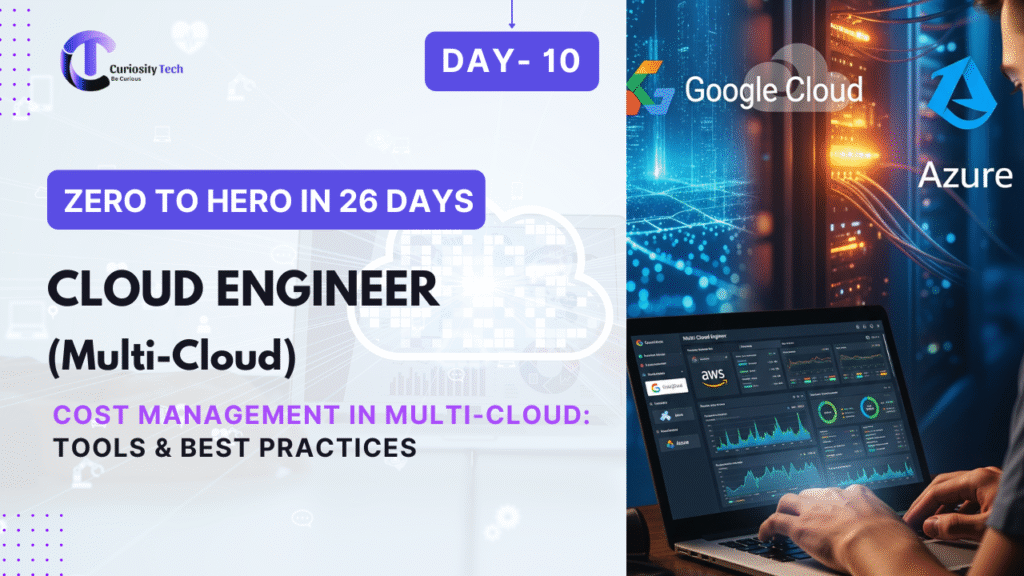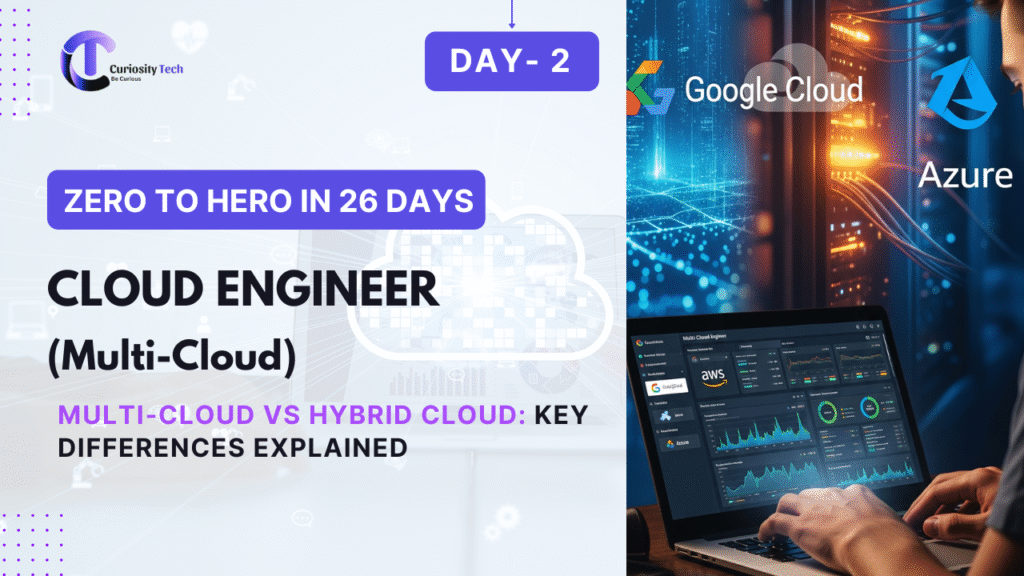Executive Summary
The promise of multi-cloud—flexibility, resilience, innovation—often collides with financial reality. Enterprises that spread workloads across AWS, Azure, and GCP frequently encounter unpredictable billing, hidden data egress charges, and difficulty in creating a single pane of glass for financial visibility.
This blog presents a comprehensive strategy for cost management in multi-cloud, covering the core cost drivers, available tooling, best practices, and financial models. At CuriosityTech.in, we mentor engineers and managers to not only optimize technically but to align costs with business outcomes.
Understanding Multi-Cloud Cost Categories
Cloud cost management requires breaking down expenses into five fundamental categories:
| Cost Category | AWS Example | Azure Example | GCP Example | Hidden Complexity |
| Compute | EC2, Lambda | VM, Functions | Compute Engine, Cloud Run | Overprovisioning, idle instances |
| Storage | S3 | Blob Storage | Cloud Storage | Data lifecycle & replication costs |
| Networking | Data transfer | Virtual Network Peering | Interconnect | Cross-cloud egress fees |
| Database | RDS, Aurora | SQL DB, Cosmos DB | Cloud SQL, BigQuery | Query cost per TB processed |
| Management & Support | AWS Support Plans | Azure Advisor | GCP Cost Management | Vendor-specific dashboards |
Infographic (Explained in Words)




